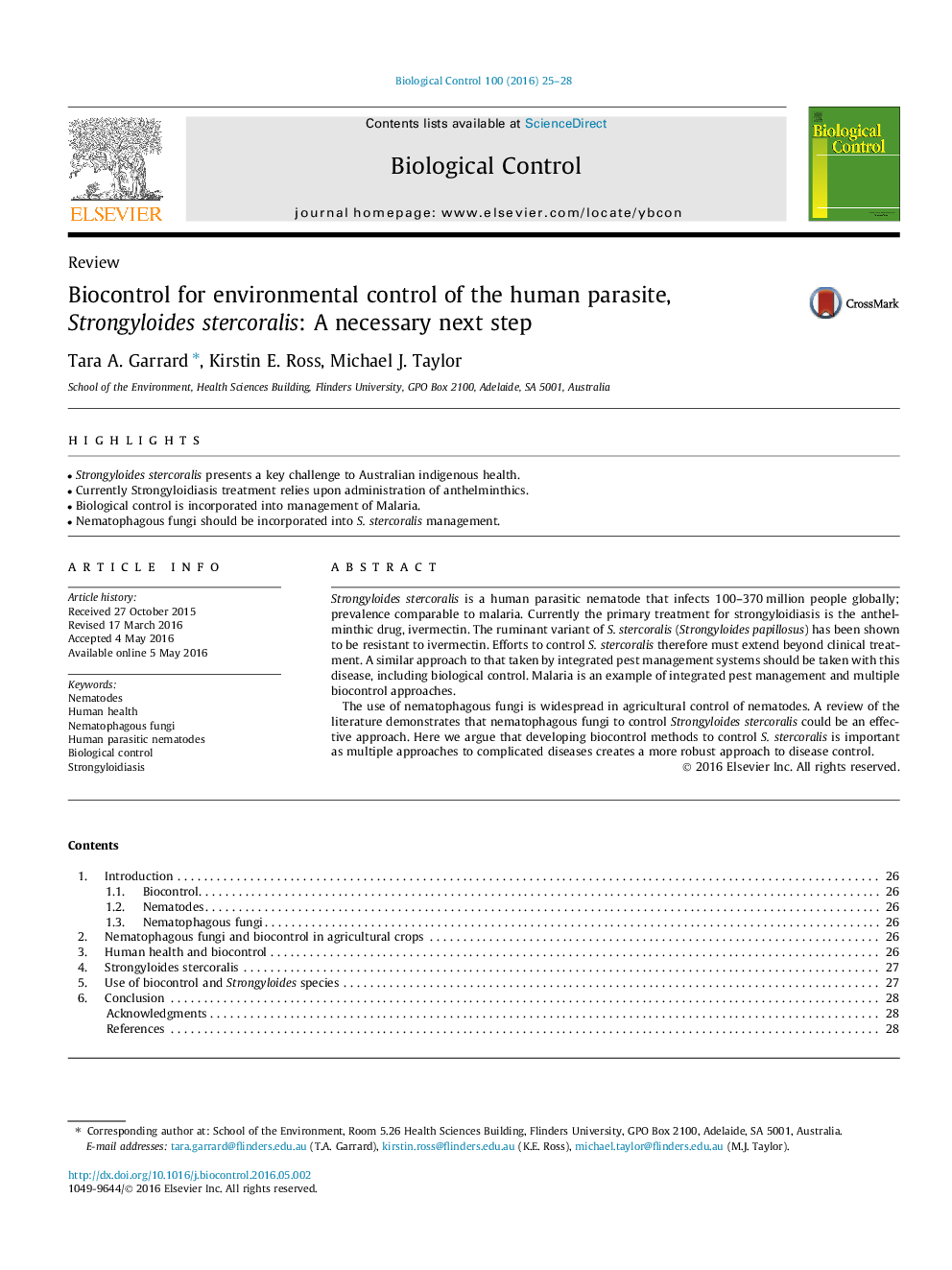| Article ID | Journal | Published Year | Pages | File Type |
|---|---|---|---|---|
| 4503583 | Biological Control | 2016 | 4 Pages |
•Strongyloides stercoralis presents a key challenge to Australian indigenous health.•Currently Strongyloidiasis treatment relies upon administration of anthelminthics.•Biological control is incorporated into management of Malaria.•Nematophagous fungi should be incorporated into S. stercoralis management.
Strongyloides stercoralis is a human parasitic nematode that infects 100–370 million people globally; prevalence comparable to malaria. Currently the primary treatment for strongyloidiasis is the anthelminthic drug, ivermectin. The ruminant variant of S. stercoralis (Strongyloides papillosus) has been shown to be resistant to ivermectin. Efforts to control S. stercoralis therefore must extend beyond clinical treatment. A similar approach to that taken by integrated pest management systems should be taken with this disease, including biological control. Malaria is an example of integrated pest management and multiple biocontrol approaches.The use of nematophagous fungi is widespread in agricultural control of nematodes. A review of the literature demonstrates that nematophagous fungi to control Strongyloides stercoralis could be an effective approach. Here we argue that developing biocontrol methods to control S. stercoralis is important as multiple approaches to complicated diseases creates a more robust approach to disease control.
